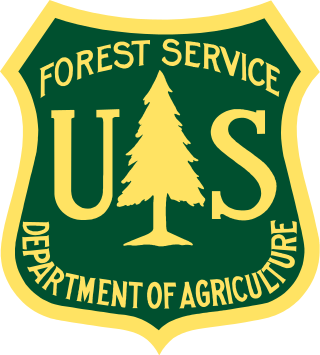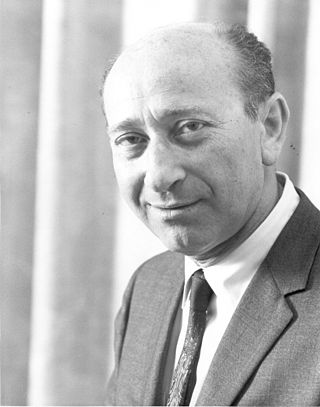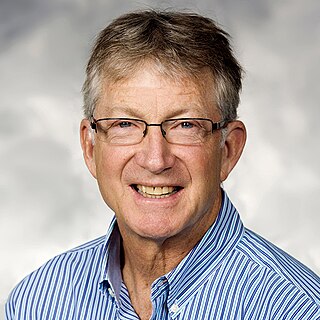
Cellulose is an organic compound with the formula (C
6H
10O
5)
n, a polysaccharide consisting of a linear chain of several hundred to many thousands of β(1→4) linked D-glucose units. Cellulose is an important structural component of the primary cell wall of green plants, many forms of algae and the oomycetes. Some species of bacteria secrete it to form biofilms. Cellulose is the most abundant organic polymer on Earth. The cellulose content of cotton fiber is 90%, that of wood is 40–50%, and that of dried hemp is approximately 57%.

Paper engineering is a branch of engineering that deals with the usage of physical science and life sciences in conjunction with mathematics as applied to the converting of raw materials into useful paper products and co-products. The field applies various principles in process engineering and unit operations to the manufacture of paper, chemicals, energy and related materials. The following timeline shows some of the key steps in the development of the science of chemical and bioprocess engineering:

The Forest Products Laboratory (FPL) is the national research laboratory of the United States Forest Service, which is part of USDA. Since its opening in 1910, the FPL has provided scientific research on wood, wood products and their commercial uses in partnership with academia, industry, tribal, state, local and other government agencies. The laboratory is headquartered in Madison, Wisconsin. The focus of the Forest Products Laboratory is to promote healthy forests and forest-based economies through the efficient, sustainable use of the Nation's wood resources.
Gilbert Stork was an organic chemist. For a quarter of a century he was the Eugene Higgins Professor of Chemistry Emeritus at Columbia University. He is known for making significant contributions to the total synthesis of natural products, including a lifelong fascination with the synthesis of quinine. In so doing he also made a number of contributions to mechanistic understanding of reactions, and performed pioneering work on enamine chemistry, leading to development of the Stork enamine alkylation. It is believed he was responsible for the first planned stereocontrolled synthesis as well as the first natural product to be synthesised with high stereoselectivity.

Herman Francis Mark was an Austrian-American chemist regarded for his contributions to the development of polymer science. Mark's X-ray diffraction work on the molecular structure of fibers provided important evidence for the macromolecular theory of polymer structure. Together with Houwink he formulated an equation, now called the Mark–Houwink or Mark–Houwink–Sakurada equation, describing the dependence of the intrinsic viscosity of a polymer on its relative molecular mass. He was a long-time faculty at Polytechnic Institute of Brooklyn. In 1946, he established the Journal of Polymer Science.

The University of Wisconsin–Madison is a public land-grant research university in Madison, Wisconsin, United States. Founded when Wisconsin achieved statehood in 1848, UW–Madison is the official state university of Wisconsin and the flagship campus of the University of Wisconsin System. It was the first public university established in Wisconsin and remains the oldest and largest public university in the state. UW–Madison became a land-grant institution in 1866. The 933-acre (378 ha) main campus, located on the shores of Lake Mendota, includes four National Historic Landmarks. The university also owns and operates the 1,200-acre (486 ha) University of Wisconsin–Madison Arboretum, located 4 miles (6.4 km) south of the main campus, which is also a National Historic Landmark.
Robert Byron Bird was an American chemical engineer and professor emeritus in the department of chemical engineering at the University of Wisconsin-Madison. He was known for his research in transport phenomena of non-Newtonian fluids, including fluid dynamics of polymers, polymer kinetic theory, and rheology. He, along with Warren E. Stewart and Edwin N. Lightfoot, was an author of the classic textbook Transport Phenomena. Bird was a recipient of the National Medal of Science in 1987.
Robert H. Burris was a professor in the Biochemistry Department at the University of Wisconsin-Madison. He was elected to the National Academy of Sciences in 1961. Research in Burris's lab focused on enzyme reaction mechanisms, and he made significant contributions to our knowledge of nitrogen fixation.
Laura Lee Kiessling is an American chemist and the Novartis Professor of Chemistry at the Massachusetts Institute of Technology. Kiessling's research focuses on elucidating and exploiting interactions on the cell surface, especially those mediated by proteins binding to carbohydrates. Multivalent protein-carbohydrate interactions play roles in cell-cell recognition and signal transduction. Understanding and manipulating these interactions provides tools to study biological processes and design therapeutic treatments. Kiessling's interdisciplinary research combines organic synthesis, polymer chemistry, structural biology, and molecular and cell biology.

Menachem Lewin, was an Israeli chemist. Lewin worked in polymer, fiber and nanotechnology research. Until his death, a month before his 93rd birthday, Lewin was in charge of a research program at the Polytechnic Institute of New York University. In 2009, he was appointed as editor-in-chief of the Encyclopedia on Fiber science and Engineering, to be published by Wiley in New York. Lewin obtained 29 U.S. and European patents and published 175 peer-reviewed publications. He was the founder (1990) and editor-in-chief of the international monthly journal Polymers for Advanced Technologies (PAT). PAT sponsors international biannual symposia for scientists, and Lewin often served as chairman, co-chairman or honorary chairman.
Vivian Thomas Stannett, Camille Dreyfus Professor Emeritus of Chemical Engineering and dean emeritus of the graduate school at North Carolina State University, was an English American chemist known for his contributions to the field of polymer science. In 1981 he received North Carolina's top science honor, the North Carolina Science Award and Gold Medal, and in 1995 he was elected to the National Academy of Engineering, an organization of the United States National Academies, for advancements in transport processes and radiation chemistry in polymers.
John Douglass Ferry was a Canadian-born American chemist and biochemist noted for development of surgical products from blood plasma and for studies of the chemistry of large molecules. Along with Williams and Landel, Ferry co-authored the work on time-temperature superposition in which the now famous WLF equation first appeared. The National Academy of Sciences called Ferry "a towering figure in polymer science". The University of Wisconsin said that he was "undoubtedly the most widely recognized research pioneer in the study of motional dynamics in macromolecular systems by viscoelastic techniques".
Tim Andreas Osswald is a mechanical engineer and the K. K. and Cindy Wang Professor in the Department of Mechanical Engineering at the University of Wisconsin-Madison. He is also honorary professor at the University of Erlangen-Nuremberg in Germany and the National University of Colombia. Osswald has authored 12 books in the field of polymer engineering and teaches polymer processing and designing with polymers. His research includes modeling and simulation in polymer processing, engineering design with plastics, sustainability and biopolymers.

James L. Skinner is an American theoretical chemist. He is the Joseph O. and Elizabeth S. Hirschfelder Professor Emeritus at the University Wisconsin-Madison. He is also a member of the Scientific Advisory Board of the Welch Foundation. Most recently, Skinner was the Crown Family Professor of Molecular Engineering, professor of chemistry, director of the Water Research Initiative and deputy dean for faculty affairs of the Pritzker School of Molecular Engineering at the University of Chicago. Skinner is recognized for his contributions to the fields of theoretical chemistry, nonequilibrium statistical mechanics, linear and nonlinear spectroscopy of liquids, amorphous and crystalline solids, surfaces, proteins, and supercritical fluids. Skinner is the co-author of over 230 peer-reviewed research articles.
James P. Hamilton is a Wisconsin Distinguished Professor in Chemistry at the University of Wisconsin-Platteville.
Emily D. Cranston is a Canadian chemist who is a professor at the University of British Columbia and President’s Excellence Chair in Forest Bioproducts. She investigates nanocellulose and hybrid bio-based materials. Cranston is an NSERC E.W.R. Steacie fellow and was awarded the Kavli Emerging Leader in Chemistry lectureship in 2018 and the Tappi NanoDivision Technical Award in 2021.
Stuart L. Cooper is an American engineer. As a Full Professor and Chair of Ohio State University's Department of Chemical and Biomolecular Engineering, Cooper was elected to the National Academy of Engineering in 2011.

George I. Mantanis is a Greek wood scientist and professor at the University of Thessaly, who is an elected fellow of the International Academy of Wood Science.
John Ralph is a New Zealand-born, American chemist, wood scientist, and professor at the University of Wisconsin-Madison. He is an elected fellow (FIAWS) of the International Academy of Wood Science and the American Association for the Advancement of Science (FAAAS).

Roger M. Rowell is an American biochemist and wood scientist of the Forest Products Laboratory at Madison and emeritus professor at the University of Wisconsin-Madison, who is an elected fellow (FIAAM) of the International Association for Advanced Materials and an elected fellow (FIAWS) of the International Academy of Wood Science.









